A Scenic, Surprising Ride Through Norway’s Winding Passes and Dramatic Fjords
After a restful night in a real bed, we allowed ourselves an extra hour of sleep—no tents to pack this morning! While I brewed coffee, Michel picked up fresh bread from a nearby supermarket. By half-past nine, we were geared up, aiming to conquer the famous Trollstigen and take in the dramatic beauty of the Geiranger Fjord.
First, a fuel stop to ensure enough range for the day’s ride. But just 12 kilometers from the Trollstigen’s ascent, we found a road closure notice. Despite having only reopened two weeks prior, the route had been shut again due to falling rocks, including a boulder that struck a car. Authorities are conducting geological surveys on the mountainside, so the road will remain closed for now. It’s a disappointment, but that’s part of the journey. With a quick reroute, we set our sights on the Geiranger Pass instead.
The viewpoint atop Geiranger was bustling with buses and campers crammed into every available spot. The traffic chaos had narrowed the road down to one usable lane, leaving little space for photos. Below in the fjord, a colossal cruise ship sat anchored, emitting clouds of black smoke. Small shuttle boats zipped between the ship and the shore, ferrying passengers to explore the “quaint” tourist village—set up solely to accommodate these cruising crowds.
Descending the Geiranger Pass was an experience: a series of tight, steep switchbacks surrounded by towering cliffs. Unfortunately, the cruise guests had rented small, open, four-wheelers that crawled along at 35 km/h, creating a snail-paced queue on the otherwise thrilling route. It’s tourism in full force here, with businesses finding every opportunity to cater to and capitalize on the passing visitors.
The village of Geiranger itself, nestled at the fjord’s base, has little local life remaining; it’s transformed into a dense tourist village with shops and cafés catering to a constant influx. We bypassed the crowds quickly, ascending on the other side of the fjord, where the traffic eased, and we found a scenic spot to snap a photo. Higher up, we encountered snowy roadsides as the temperature dropped to 5°C, a chilling reminder of Norway’s rugged peaks. We rode on, following the high mountain road eastward across a vast, isolated plateau.
The weather is changing to heavy rain.
With heavy rain forecasted for the coast, we adapted our route to head towards the drier weather near the Swedish border. One of the highlights of the day was crossing an impressive arched bridge that wound elegantly across a fjord, adding to the day’s visual splendor.
On one of the last stretches downhill, a driver flashed their lights at us. Moments later, I felt a sharp impact against my right foot, sending a shock up my toes. What just happened? I pulled over to inspect my bike and boot. Despite the sudden pain, nothing seemed out of place, and Michel, who had been riding behind, saw nothing unusual either. A mystery. Thankfully, I had been recording on the camera, so I planned to review the footage later.
During our post-ferry lunch stop, I reviewed the video on my small screen. It showed that I narrowly missed a large, road-colored stone with my wheels, but my foot had clipped it directly. Likely fallen from a passing truck, this rock had been invisible to both Michel and another rider behind us. Lucky, indeed, and hopefully someone has since cleared it from the road.
Hostel for tonight.
We found a last-minute hostel room through Booking at Trolltun Hotell og Hytter in Dombås, scoring a spacious four-person room just for us at a camping-level price. With two bunk beds, there’s no need for rock-paper-scissors to decide who gets the top bunk this time. 😁😂
Dinner at the hostel’s restaurant featured local elk, rich and savory, and a comforting preview of the included breakfast tomorrow. Tomorrow, we’ll continue southeast toward Lillehammer, keeping to the clearer skies and soaking up more of Norway’s scenic wonders.
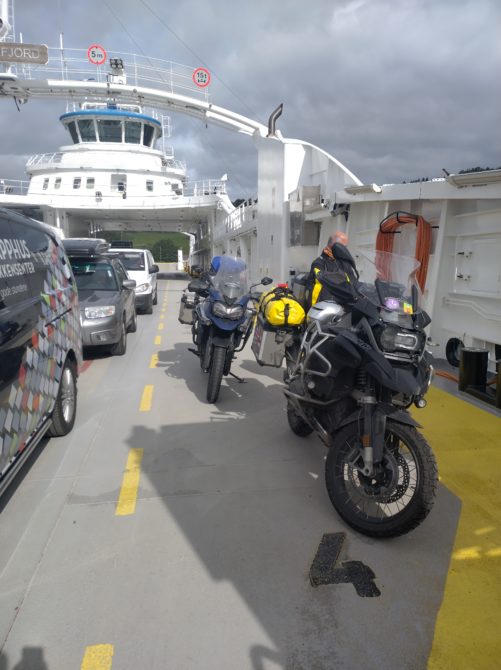
On the ferry
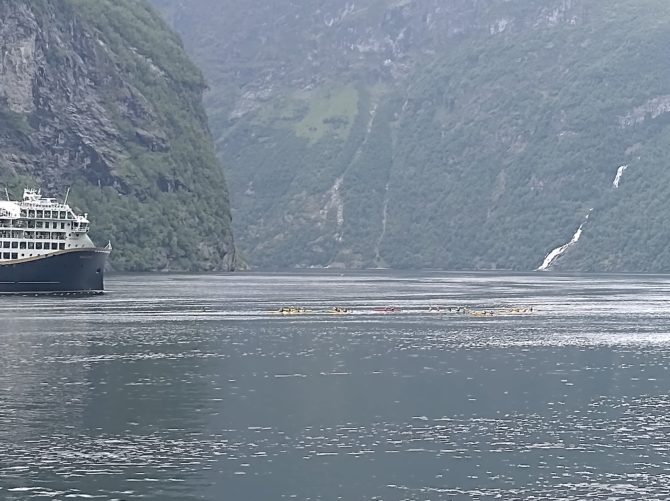
Geiranger Fjord
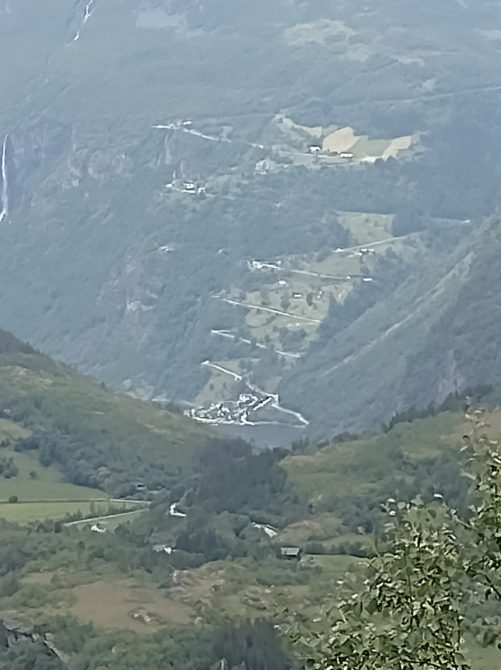
Geiranger Fjord
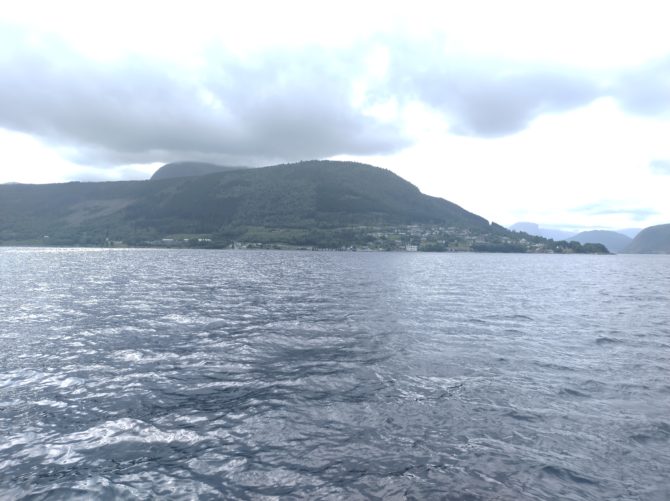
Geiranger Fjord
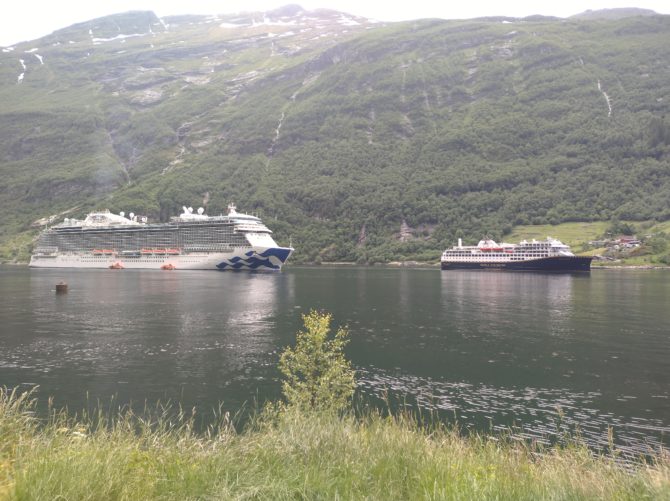
Geiranger Fjord
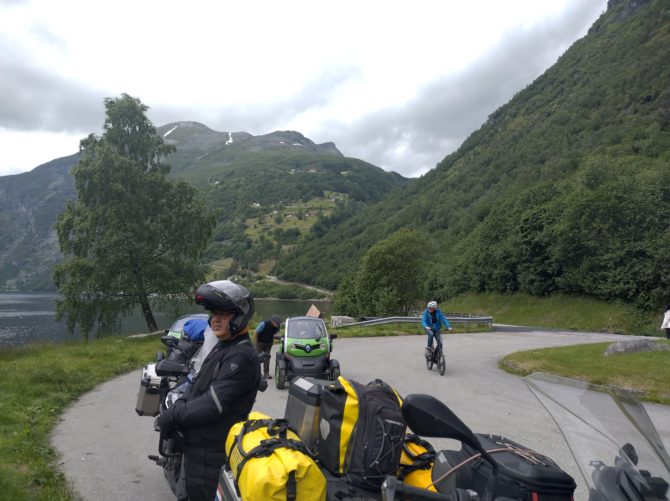
Geiranger Fjord
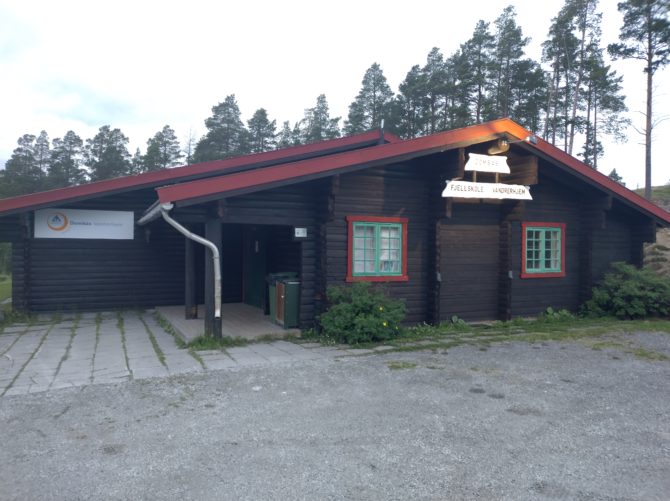
Trolltun Hotell og Hytter in Dombås

Waffle with ice cream

Comments
This post currently has no responses.